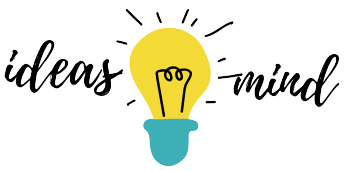Unsecured loans are credit without collateral. You can borrow a specific amount of money from banks, private institutions, small companies, unions, or friends without needing to put your assets on the line. This is very convenient for people who need money to finance a significant renovation or need help with debt consolidation.
However, the requirements may vary from one lender to another. These financiers will usually take a look at your credit report, history of delinquency, current income, and many others. Some of these businesses review applications all day long, but only a tiny percentage of borrowers get approval.
Before you start with the loan, you may want to become more familiar with the qualifications that you need to meet. It’s better to submit the documentation that they require in the soonest time possible, so you’ll get the cash faster. Here are some of the standard requirements when it comes to loan evaluation.
History and Current Credit Score
One of the most critical factors that so many lenders consider is the applicant’s credit history. The scores may range from 300 to 850, and those with 700 or more are often getting the better rates and lower interest every month. There’s the length of the credit history, the total amount of the outstanding debt, and payment histories that are all taken into consideration when you apply.
Most of the minimum scores are around 600 or more to qualify for an unsecured loan. However, it’s best to know that many financers accept applicants who don’t have any credit history, especially for student loans with the help of a co-borrower.
Income Amount
Income requirements are usually imposed on the borrowers to decrease the risks on the lenders’ part. This will ensure that specific individuals do actually have the means to repay their loans. For example, some of the banks may require a salary of at least $45,000 per annum, and the annual income requirement in some platforms may be $20,000. However, you should not be surprised when the lender won’t disclose these pieces of information on their websites, as many of them don’t anyway.
The evidence of earnings may be in the form of pay stubs, monthly bank statements, tax returns, employer-generated certificates, and deposits. If you can provide one of these, then you’re usually good to go.
Ratio of Debt-to-Income
This is another crucial factor that many banks consider. They will do a background check on your financial standing to see if you have other debts aside from the one that you’re applying for. This is some portion of money on the borrower’s gross monthly income that goes into debts.
The debt-to-income ratio is usually an excellent predictor of a borrower’s ability to pay the new and current debt. A percentage of less than 36% will have a higher chance of getting approved, and others may consider an applicant to be highly qualified if they have over 50% of this.
Collateral Properties
Secured personal consumer loans may require the borrowers to sign up one of their assets as collateral. This may be in the form of cars and houses. Know that other valuable assets can collateralize other secured personal loans. This may include collectibles, investment accounts, cash accounts, and precious metals.
When you default or fall behind payments for months, there’s a possibility that the bank will repossess the collateral asset so it can recoup some of the losses. The value will pay for some of your balances with them.
Origination Fees to Know
Although the origination fee is not necessarily a part of the entire process, know that they are present in personal loans. These will usually cover the overall costs of closing, running credit investigation, and processing applications. They may range from 1% to 9% of the total amount, which will also depend on the applicant’s loan amount and current credit score. You might notice that the amount disbursed in your bank account is less than what you’ve requested.
If so, check the statement and make sure that you know the charges and the origination fees involved. Others will include these into your monthly repayment plan, and you can usually get the credit amount in full. However, the most common occurrence is that the origination fees are subtracted from the total amount of the loan upon disbursement and closing.
About the Documents
Generally, the bank or the lending institution will require specific documents from you. During the application, they will confirm your current employment, tax payments, residence, and many others. These are all part of the process, and if you have a good history of paying them, the approval will generally take less than a minute in some cases.
Application Process
Overall, the application will require a formal document that borrowers should sign. You need to fill in the details and submit the correct information to begin the entire process. Each of the lenders has its own requirements and procedures, and they may limit the amount of loan you can borrow and want to let you know about the purpose.
The format will also be different from one lender to another. Numerous financiers may offer credit lines over the phone, and some will discuss a few things with you before they get your approval. In the case of brick-and-mortar financing companies, you may be required to go to them to submit an in-person application.
Providing the Proof of Identity
These financiers will require most of their applicants to be at least 18 years old at the time of the application. They should be citizens in the country where the financing institution is located. Some precautions are taken to avoid identity theft and reduce risks, and this is where identification cards are needed. Some of the acceptable government-issued IDs may include the following:
- Military IDs
- Birth Certificates
- Proof of Citizenship
- Passport
- State or Government-Issued IDs
- Driver’s License
Income and Employer Verification
The financiers will check your ability to pay for the loan amount, and this is where your current income statement comes in. There’s a need to check your employment history, recent payslip for the earnings, and tax returns. They will call your employer to check if you’re still with them and be prepared to show bank statements and pay stubs if the need arises.
Proof of Address
You might also want to show the banks that you currently have a situation where you’re in a stable living position. This means that you have the most recent utility bill, rental or lease agreement, voter’s ID, auto insurance, and many others. Check out the link billigeforbrukslån.no/beste-forbrukslån/ for more information about the requirements and easier loan processing. The established companies will let you know about the requirements and will even do a pre-qualification, so you’ll see if you have the chance of getting approved or not.
Getting the Personal Loan
Nowadays, you can just complete the application with the help of online websites or apps. You just need to check your credit score and see if you can improve this in a few months to get a higher chance of getting approved. Pre-qualifications are often available on some websites, and you’ll know through them about the percentage of getting approved or rejected.
If you’re denied, it can be for various reasons, such as not meeting the requirements or banks thinking that you might be a high-risk borrower. If you can get into more stable employment and pay off the other outstanding debts that you have, then all the better.
With this said, you can still do a re-application and review any inaccuracies that you may have in the document. Check with the others that don’t have strict requirements, and don’t forget to compare interest rates while you’re at it. Consider getting a co-signer as well.










